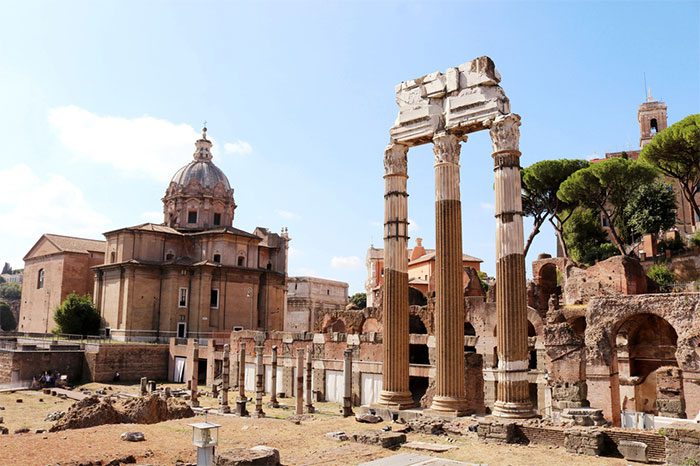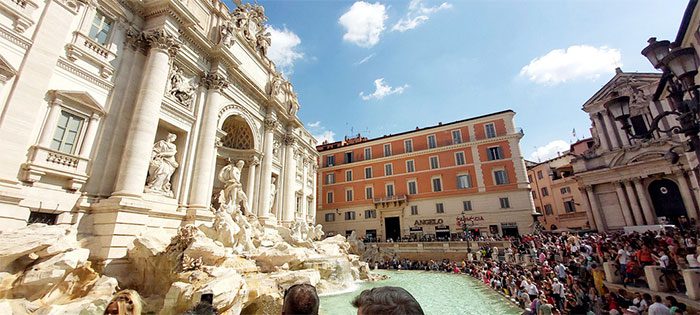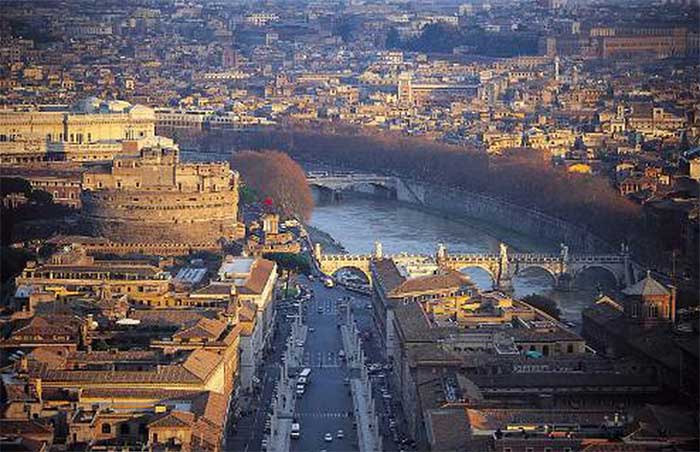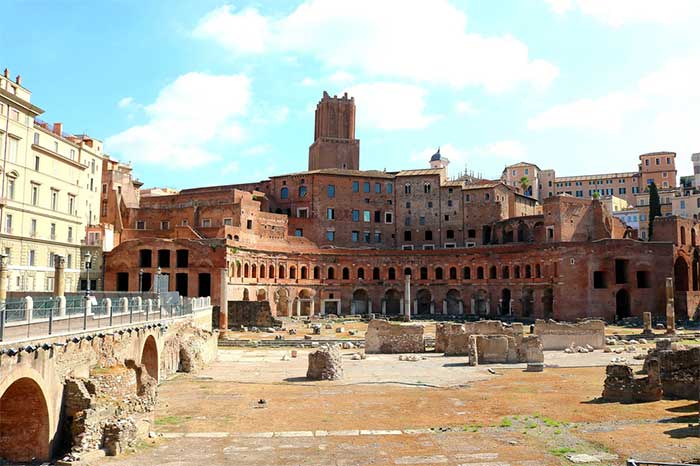The question is not whether a catastrophic flood will happen, but when. Rome’s new climate agency is urgently seeking solutions.
According to research experts, the capital city of Rome, Italy, was not built in a day, but a significant portion of the city could be devastated in just a few hours when extreme climate events occur.
What makes Rome a “climate time bomb,” according to National Geographic, is the combination of outdated infrastructure and decades of policy planning that largely overlooks the ongoing climate crisis.

A view of the capital city of Rome with the famous Roman Colosseum – (Photo: America Domani).
Climate is Always Changing, the Eternal City is Not
Since 2008, extreme rainfall events have increased in frequency and intensity in Rome. Approximately 20 of the most extreme incidents recorded from 2010 to 2020 have caused severe flooding in the urban area of Rome, according to the European Mediterranean Climate Change Centre.
Even moderate rainfall leads to frequent flooding in some streets. These streets act like rivers flowing to lower areas, inundating subway stations and underpasses…
Severe heatwaves are another downside of climate change. Over the past two decades, the average temperature in Rome has risen by 3.6 degrees Celsius compared to the period from 1971 to 2000. The number of heat-related deaths among adults aged 50 and older has increased by 22%.
The climate of Rome is a pendulum swinging between drought and flood.

The most significant archaeological sites in the world are openly threatened by climate change right in the heart of Rome – (Photo: H.TR).

Popular tourist destinations like the Trevi Fountain are also a challenge for Rome’s preservation efforts – (Photo: H.TRANG).
Andrea Filpa, an architect and urban planner at Roma Tre University and co-author of Rome’s first “vulnerability map,” stated: “Climate change is exacerbating pre-existing issues.”
His research highlighted several major obstacles for the city in adapting to climate change. For example, over 90% of the urban area is covered by impermeable surfaces, preventing water drainage.
Some neighborhoods lack effective drainage systems, making those areas prone to flooding.
Some districts near the coast were reclaimed in the 19th century and are now below sea level, requiring continuous pumping to keep them dry.
The Main Threat
The primary threat to Rome comes from water. The city was built on a hydraulic balance designed for a pre-industrial climate.
A major flood of the Tiber River would be devastating. The issue is not if it will happen, but when.
Experts agree that the breaking point of the riverbanks lies in the northern part of the city, around the Milvian Bridge. If the river overflows in this area, water will flow into the historic city center without any way to stop it.

A view of Rome from above – (Photo: Britanica).

Many ancient Roman architectural ruins are located in the low-lying areas of Rome – (Photo: H.TR).
Aldo Fiori, a hydraulic engineer at Roma Tre University and a leading expert on Rome’s water systems, has modeled the potential future floods of the Tiber River.
In all scenarios, it shows that the Pantheon will be submerged under at least 2.5 meters of water, severely damaging the entire historic center.
A Vision for Rome
The person responsible for outlining the overarching vision for Rome is Edoardo Zanchini. As an architect and long-time environmental activist, he was appointed director of the newly established Climate Agency of the city in 2022.

A typical small street of Rome – (Photo: Britanica).
In 2021, the Rome City Council voted for a plan to reduce greenhouse gas emissions by 51% by 2030. The Climate Agency is working to present an adaptation strategy by next fall.
What will the new plan entail? “It will be anything but what has been done at the national level,” Zanchini said.
The three priorities set by Zanchini are: Preventing water shortages in Rome, minimizing the risk of catastrophic flooding, and implementing emergency measures to combat the impacts of deadly heatwaves in the summer.
For Zanchini, the task of creating a conservation plan for Rome, with its over 2,800 years of history, will be challenging. But he remains optimistic.


















































